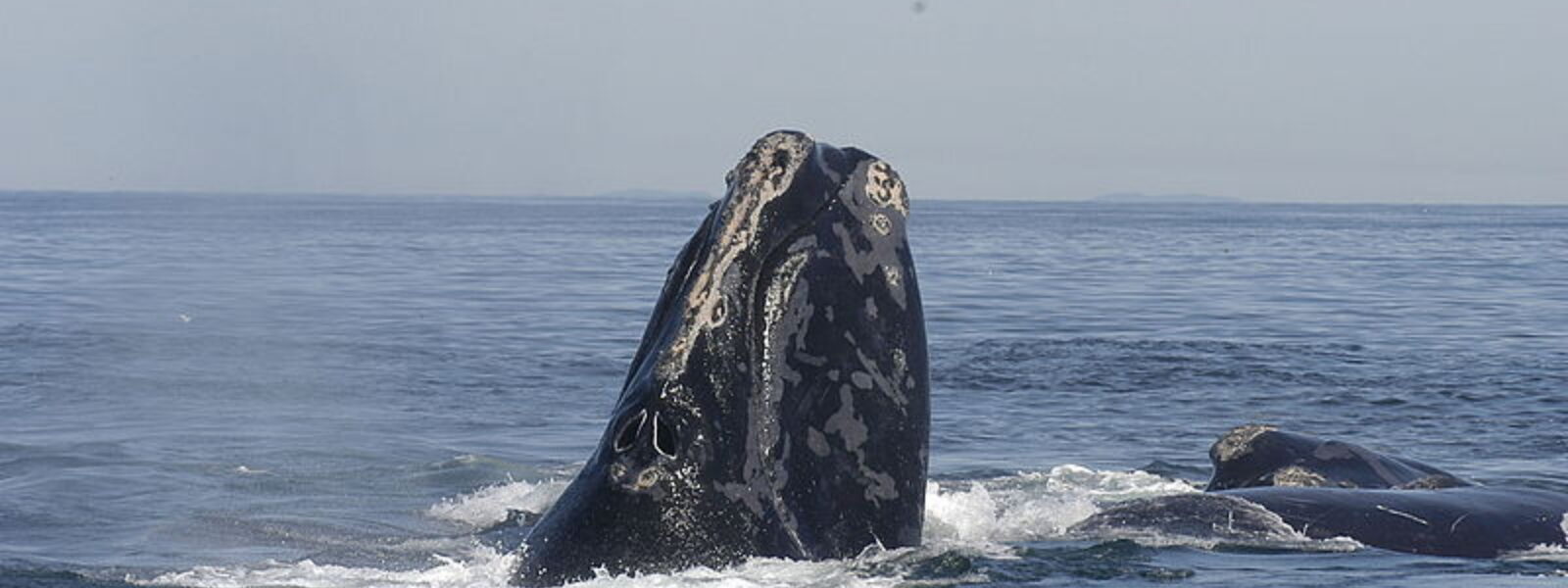

Early whalers supposedly named the Right Whale because it was the right whale to kill. They were slow swimming, so small boats could sneak up and harpoon them easily. The dead whale floated when killed, instead of sinking. Furthermore, the Right Whale had large amounts of blubber, the main target of early whalers, as that was where light came from (whale oil lamps and candles) before the advent of electricity.
Presumably, thousands of right whales were slaughtered for their blubber, beginning in the Middle Ages in the Bay of Biscay, and then branching out, once Right Whales became rare, to the North Atlantic Ocean. Early whalers may well have come to America before Columbus. The American colonists sent out whaling fleets all over the world to target Right Whales and Sperm Whales, again largely focusing on boiling down the blubber into oil. The rest of the whale was discarded.
Most American whaling ceased with the growth of the use of petroleum, the scarcity of Right and Sperm whales (and eventually Gray and Bowhead Whales), and the major recession in US business in the 1890s.
While some whale species show good signs of recovery from whaling efforts, the North Atlantic Right Whale continued at very low levels, hardly showing much improvement after years of protection, begun in 1935 through the League of Nations.
Now, some scientists are predicting extinction for the North Atlantic Right Whales, as these gentle giants continue to encounter problems in the Atlantic Ocean off the East Coast of the US.
The major causes are not hard to find. Right Whales are increasingly being tangled in fishing gear, including nets and especially lines attached to crab and lobster traps. The traps are put on the bottom of the ocean but tethered to surface buoys by lines so fishermen can find them and retrieve them.
Because Right Whales are such slow swimmers, they are easily hit and killed by fast-moving ships going in and out of East Coast seaports.
Last year, 17 Right Whales were reported killed.
Furthermore, for some reason, Right Whales are not producing any offspring. With only 450 Right Whales left in the North Atlantic, only a few of which are breeding females, the entire population could disappear in one generation.
Global warming may be involved – changes in the temperature of the ocean may have had adverse effects on the krill that feeds the Right Whales.
Several steps have been taken by both the US and Canada to help the Right Whales. They are protected by both countries, and both countries have imposed speed limits on ships that traverse some of the habitat of the Right Whales. But the area the whales inhabit is vast, moving from Florida up the coast into New England and Canadian waters on an annual basis.
Using new untethered crab and lobster traps that sink to the bottom but can be raised by radio signals has been experimented with, but the cost and reliability of the technology is a concern for fishermen. There are already a number of teams, trained in disentangling whales from fishing lines and nets, working the habitat of the Right Whales, but such teams are limited in the geographic scope they can cover.
Steps need to be taken now to encourage the growth of the endangered Right Whale population in the North Atlantic. It is never easy to modify human behavior, especially behavior involving jobs, to accommodate endangered species. But a world without Right Whales just would not be right.